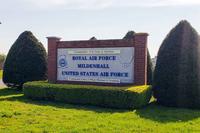The Defense Department disputed a report published Tuesday quoting NATO’s top official saying NATO troops might leave Afghanistan earlier than the scheduled 2014 timeline following the spike of “insider attacks” -- or supposed Afghan soldiers and police murdering NATO and U.S. troops.
“The press report is incorrect,” said George Little, the chief Pentagon spokesman, when asked about the comments attributed to NATO Secretary General Anders Fogh Rasmussen by Britain’s Guardian newspaper.
“There is absolutely no daylight” between the U.S. and NATO on the need to keep combat troops in Afghanistan through 2014 in the transition of security responsibilities to the Afghans, Little said.
“The secretary general is in fact committed to the timeline,” Little said.
The Guardian reported that Rasmussen, in an interview with the newspaper, said that "from now until the end of 2014 you may see (an) adaptation of our presence. Our troops can redeploy, take on other tasks, or even withdraw, or we can reduce the number of foreign troops.”
"If the security situation allows, I would not exclude the possibility that in certain areas you could accelerate the (withdrawal) process," Rasmussen was quoted as saying.
Rasmussen also cited the flagging morale of allied troops from the spike in insider attacks that have killed at least 52 U.S. and coalition forces this year. "There's no doubt insider attacks have undermined trust and confidence, absolutely" of allied troops in their Afghan “partners,” the Guardian quoted Rasmussen as saying.
At a Pentagon briefing, Little said that morale was a product of success on the ground “and our men and women are achieving results. By that standard, morale is high.”
There was no immediate response from NATO headquarters in Brussels on the disputed Guardian report. But at his earlier monthly press briefing from Brussels on Monday, Rasmussen repeated the standard U.S. and NATO joint position on the way forward in Afghanistan.
"We stick to the timeline,” Rasmussen said. “By the end of 2014, the ISAF (International Security Assistance Force) combat mission will end. The Afghans will take full responsibility. And we will continue a training mission" through 2015 and beyond.
Rasmussen also acknowledged that the Taliban had achieved a “certain degree” of success in infiltrating the ranks of the Afghan security forces to carry out insider attacks.
“I mean people ask, understandably, why is it that we send trainers to Afghanistan to help the Afghan Security Forces and then Afghan soldiers or policemen turn their weapons against the trainers who are there, in the first place, to help them. So obviously this strategy aims at undermining trust and confidence. And to a certain degree it has also succeeded in that,” Rasmussen is quoted as saying in the article.
The dispute on what Rasmussen did or didn’t say overlooked the fact that major troop withdrawals have already taken place in the 11-year-old war, and several nations have already announced intentions to pull out their troops before the end of 2014. Currently, there are about 120,000 coalition troops in Afghanistan, 68,000 of them American.
Canada and the Netherlands withdrew troops in 2010. The U.S. pulled out 10,000 of the 33,000 “surge” troops last year, and late last month completed the withdrawal of the remaining 23,000.
New Zealand has announced that its 150 troops will leave by next April and France has announced that its 2,500 combat troops will be withdrawn by the end of this year, leaving behind about 1,500 training and support troops who will withdraw in 2013.
Marine Gen. John Allen, the ISAF commander, was expected to report to President Obama and the Joint Chiefs of Staff before the end of this year with his recommendations for a withdrawal schedule for the remaining 68,000 U.S. troops.




























